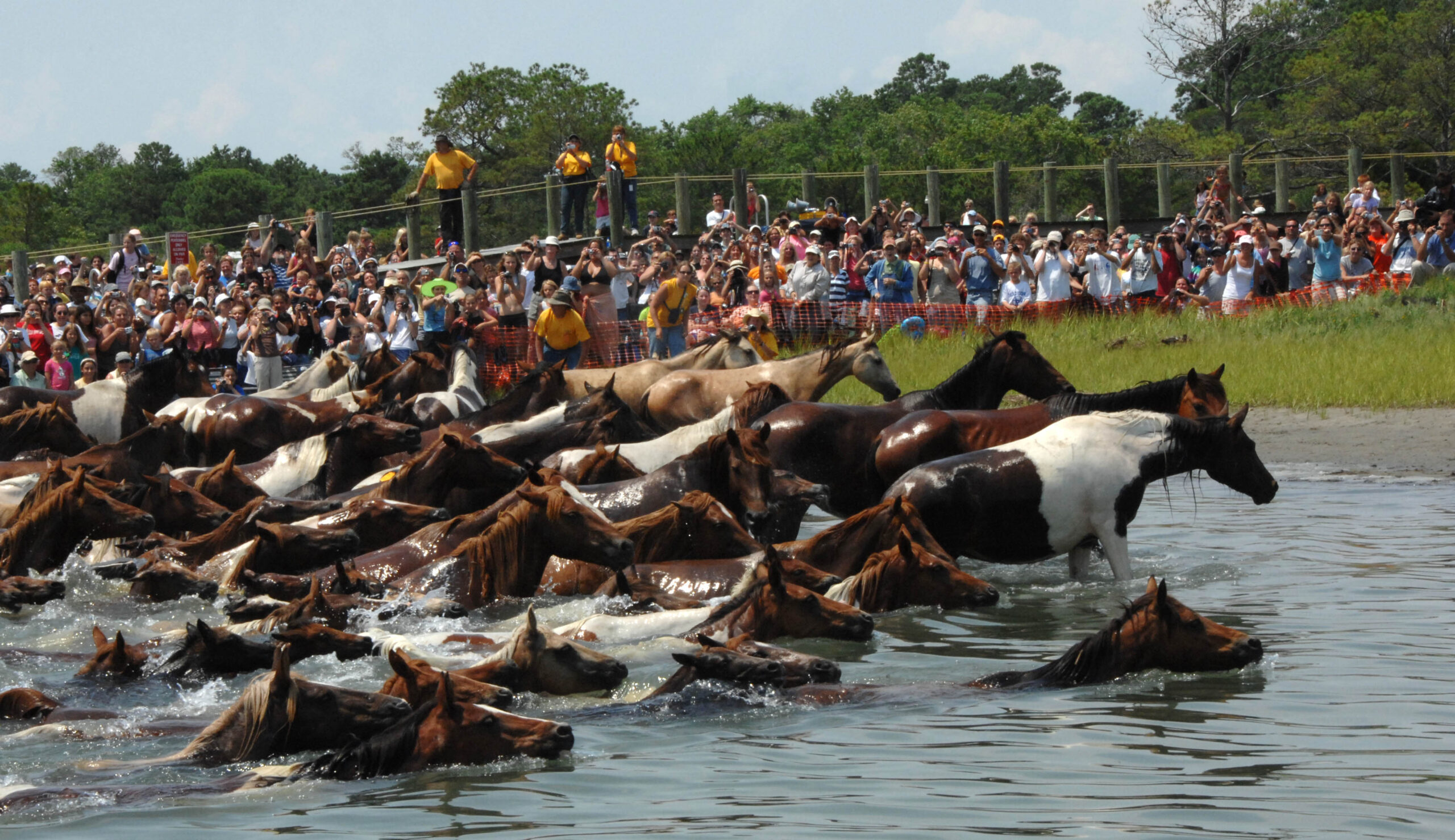Assateague Island, a long barrier island off the coast of Maryland and Virginia, is home to two populations of feral horses. On the Maryland side, the Assateague horses, as they are known, are publicly owned and managed by the National Park Service. On the Virginia side, the Chincoteague ponies are privately owned by the Chincoteague Volunteer Fire Department and occupy the island under a special use grazing permit.
No one is quite sure where the wild horses came from. Local folklore has it that they are descendents from horses that survived a shipwreck off the Virginia coast. Others say they were placed on the island by settlers in the 17th century seeking to avoid fencing and livestock taxes. Regardless, both the Assateague horses and the Chincoteague ponies originated from the same wild population that has inhabited the land for centuries and are prized for their distinctive characteristics.
Given the ownership differences between the two herds, this unique island of wild horses provides useful insights into wildlife management. Lacking natural predators, both populations need to be kept to a certain size in order to preserve the fragile barrier islands, but how each side does this is drastically different.
To stabilize the population of horses on the Maryland side at 125 horses, the National Park Service darts mares with contraceptive vaccines. While this method keeps the annual birth rate at fewer than 10 foals, it is costly and wasteful given the horses’ high value.
To maintain a sustainable population of the privately-owned Chincoteague ponies, the excess ponies are not darted but rather, are sold at a celebrated annual auction. Every July for the last 85 years, the Chincoteague Volunteer Fire Department holds a Pony Penning festival in which “salt water cowboys” swim the ponies across the narrow channel that separates the island from the mainland. After being examined by veterinarians, between 60 and 80 foals are auctioned off to maintain a population of 150 on the Virginia side of the island. The event attracts more than 40,000 spectators and brings in revenue for the local fire department. And the price the ponies fetch is impressive. In 2009, the average Chincoteague foal went for $1,344, while in the past some have gone for as high as $17,500.
The National Park Service manages a prized population of horses, yet it wages a self-defeating vaccination campaign to prevent horses from being born. On the other hand, the Chincoteague Fire Department manages its wild population of horses for the benefit of the local community, horse enthusiasts, and the continued heritage of the Chincoteague pony.




